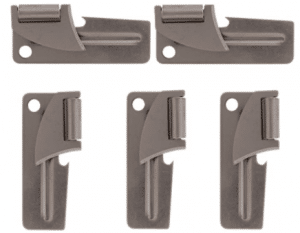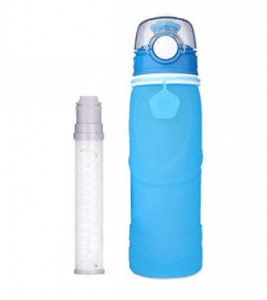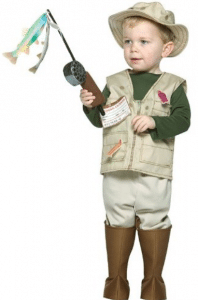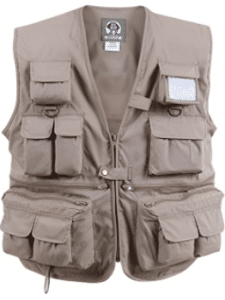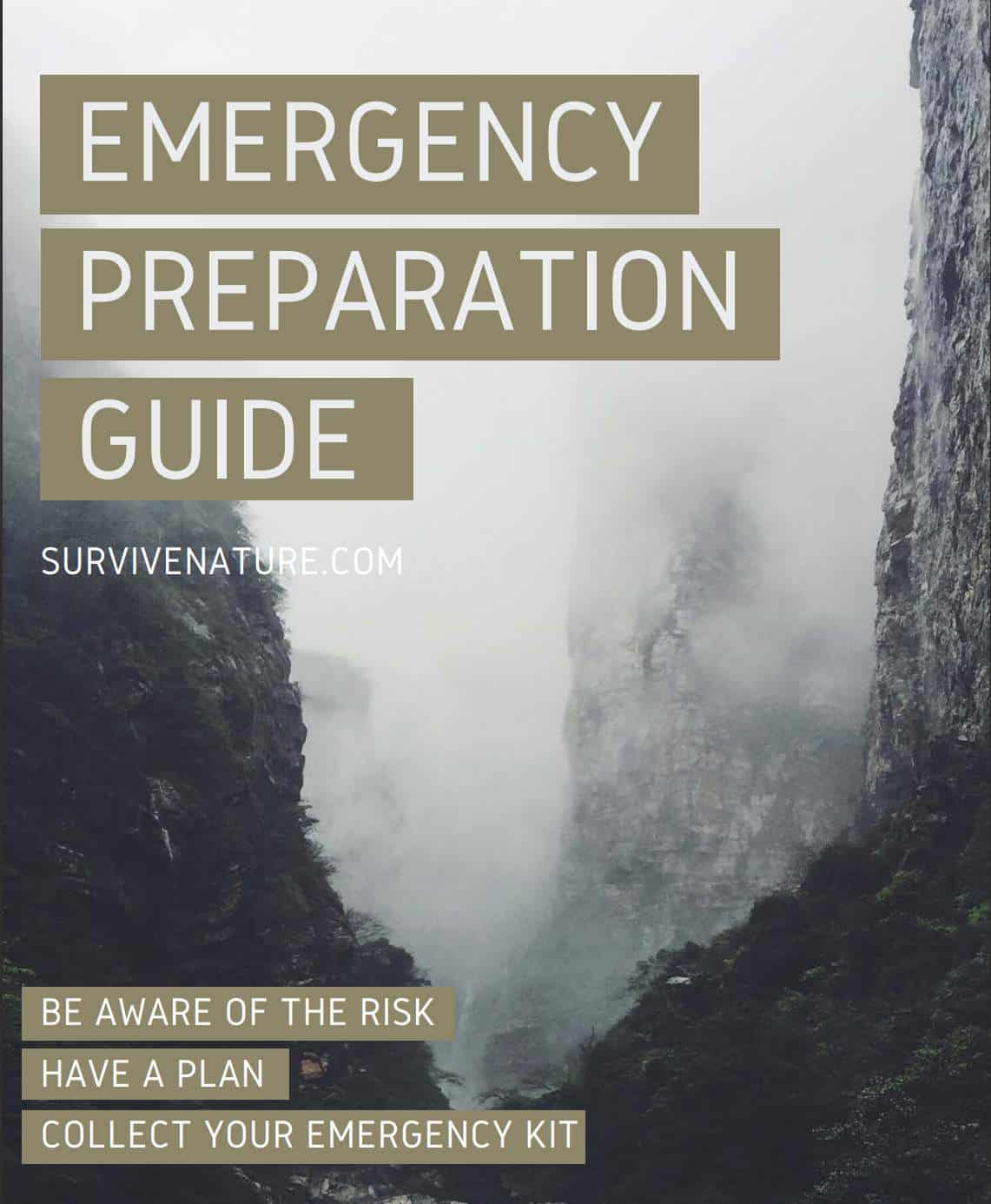Have you ever thought about what might happen in the future? Nobody knows for sure, but sometimes it is better to prepare yourself for the worst scenario ever. Any catastrophe or disaster might affect people’s lives drastically. You might be left without electricity and food, be far away from any city or town, and not have any opportunity to call someone for help.
In an emergency, you might need some things that we take for granted in our everyday life, such as some extra water. Being prepared means having basic things along with other items such as NOAA Weather Radio with tone alert and boxed food.
Therefore it is important to prepare an emergency supply kit for at least three days. However, it can also be a 96-hour survival kit depending on how much time and supplies you have. Continue reading this article to find out which supplies to include in an emergency kit, which personal hygiene items are needed to be packed, what else should be considered, and which bags and places are the best for packing and storing a 72-hour survival kit.
Emergency Supply Kit
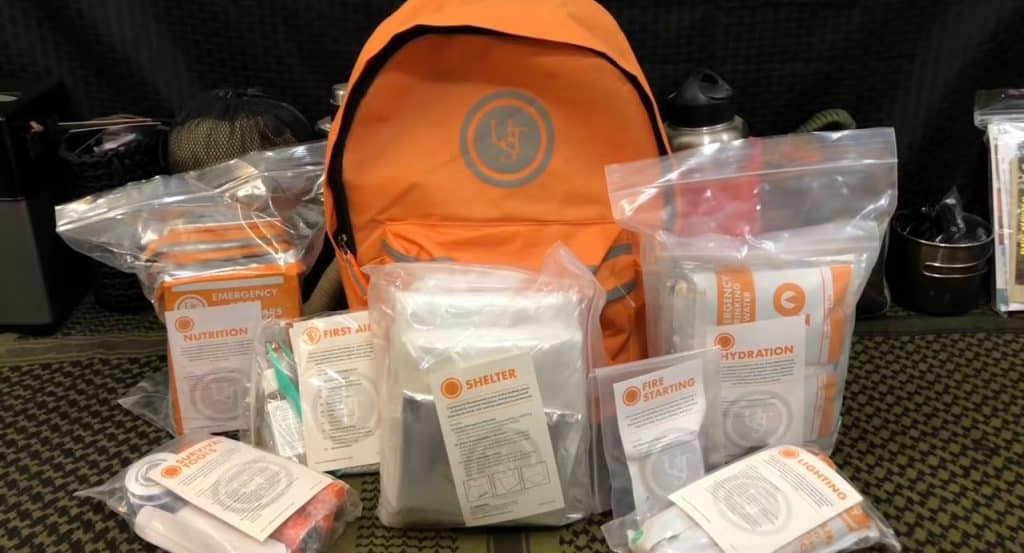
In the worst case, you might find yourself at home, in a car, or even in a deserted place without all the usual amenities including water and electricity. It is almost impossible to survive for a few days without prepared supplies such as food, water, a warm blanket, comfortable clothing, and a sleeping bag.
However, you can collect all the supplies in advance while going to the store whenever you want. Furthermore, if you have your own emergency supply kit, you will protect yourself and your family in advance and survive possible future disasters much more easily.
What to Include in a Survival Kit?

The biggest emergency box should be stored at home. Collect all the things, food, and personal hygiene items for all family members. Store all the important items in one box or suitcase because in case of emergency your family will be leaving houses as quickly as possible.
Talking about a survival kit stored in a car or working place, you should purchase enough food and some extra water for 72 hours, have another pair of comfortable shoes, and a few pieces of clothing.
We provide you with a list of all recommended items that should be added to every survival kit. You might also want to check the list once again, download, and print an official paper from the state website.
The 72 Hour Kit Contents
- Food. Choose boxed and canned food. Obviously, you do not want to replace your food supplies every once in a while so purchase non-perishable food.
- If you prepare canned food, you will also need a manual can opener. We recommend choosing the P38 as the most durable and reliable one;
- Water is essential for surviving no matter where you will be during emergencies. You should have at least one gallon of water or four liters per person for one day. Gallons of water are the heaviest part of all supplies, but it is always better to bring some extra water than to be thirsty. You might also find useful these portable water filter bottles that provide you with clean water no matter what;
- A first aid kit is crucial during all possible emergencies and disasters. You should even have first aid kit in everyday life at home and in your car to help yourself, your children, and other people in case of emergency;
- Sleeping bags. Sleeping bags are a must for every emergency kit. Do not think that you can survive during an emergency with only medicine being prepared. In case of moving out of your house, a few sleeping bags for all family members will save your lives! We recommend choosing sleeping bags made from down since they are light and do not take up much space. Moreover, they are considered to be durable and suitable for all seasons;
- Emergency shelter. This option will be just what you need when it comes to moving out of your house and going somewhere by car. Maybe you will need to stay outside the city without any shelter and people around. It might be a good idea to store an emergency shelter in your car, but if you do not have one, it will be too heavy and huge to carry;
- Plastic sheeting is a good addition to an emergency shelter. You can lay plastic sheeting on the ground to ensure the safety and cleanliness of your shelter. However, even if you do not have an emergency shelter, plastic sheeting is a good solution for living outside;
- Duct tape is an irreplaceable thing that you will need every day during emergencies and disasters. Whether you need to put up a tent or shelter or pack all your supplies, you will need duct tape for sure;
- A dust mask is a must for almost every disaster or emergency. It is needed to filter contaminated air. Ideally, try to find №95, but another dust mask is normal, too;
- Local maps are also essential. In a regular situation, nobody needs a printed map when we all have smartphones and a stable Internet connection. But many people do not realize that situation might change drastically in one moment. We do not recommend downloading local maps on your smartphone since it may run out of power. Not to get lost it is crucial to ensure you have paper local maps in your 72-hour kit. In addition, choose the ones that are easy to read and learn some important signs in advance;
- It might be necessary to have a gun in your emergency kit. You might not have any guns and not use them, but during emergencies and disasters, you might be lost in dangerous places and live in forests, so having one gun is recommended;
- NOAA Weather Radio with tone alert, hand-crank radio, or battery-powered radio. You do not want to get lost and lose touch with your loved ones so prepare some extra battery-powered devices in case your cell phone runs out of power. Moreover, during emergencies and disasters, it is crucial to receive updates concerning the current situation and weather changes;
More stuff to pack up
- You should also include your cell phone. If you have another one that you do not use every day and it is more durable concerning power and materials put it in your family kit. Think about your children, too. It is important that all family members including children have a cell phone to call each other. Do not forget to take a portable charger or some extra batteries for charging;
- Do not forget to put some extra batteries for all the battery-powered devices;
- Flashlight to be able to survive without electricity (do not forget extra batteries for it) and a whistle to call for help or find each other in the middle of nowhere;
- Some instruments such as pliers or wrench might be important for building and pitching a tent, but they are also useful for turning off all the devices, water, and electricity in your house before moving out;
- Various clothing that you can change during 72 hours in the middle of a disaster;
- Prepare some cash. It is a must to have at least twenty dollars in your 72-hour kit. You might also bring change, bills, and bank account records. Bank account records are essential for people with debit and credit cards.
Personal Hygiene Items to Pack
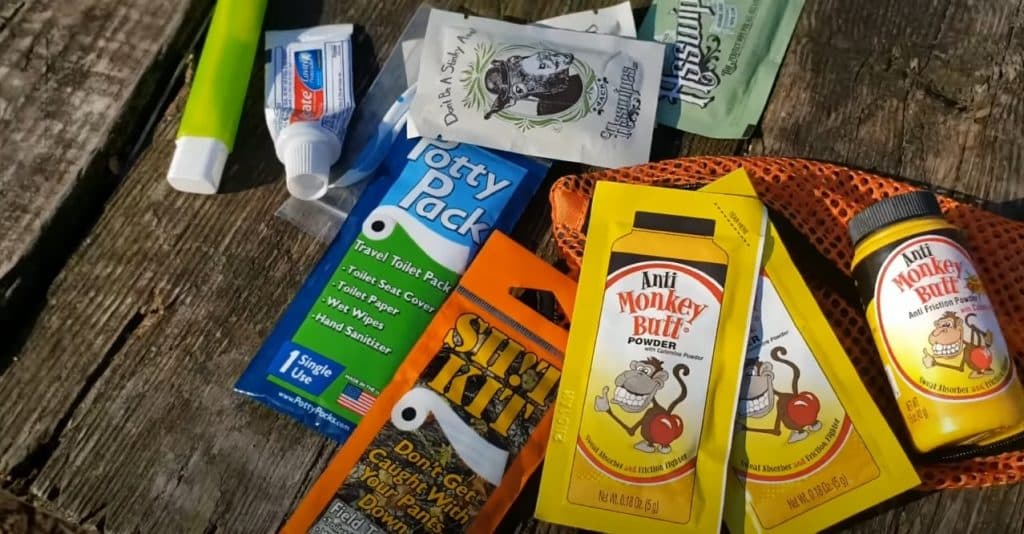
- Moist towelettes and plastic ties for personal sanitation. If you are eco-friendly, you will find trash bags that are biodegradable;
- Garbage bags for disposal of personal hygiene items and food waste;
- Personal sanitation is crucial. Bring hand sanitizer and at least one dust mask for all family members, including children. A dust mask is essential since disasters might cause air pollution, and nowadays, we live in pandemic times, so you should be prepared for the situation to get worse. It will filter contaminated air;
- Some things like a waterproof container, feminine supplies, or diapers for children are already prepared and might be stored at home in sufficient quantity. All you have to do is to pack them in your emergency kit;
- Choose suitable clothing that is comfortable enough. Pack different clothing pieces to be able to change them during a disaster. The same goes for underwear and diapers for children;
- Add all the essential medicine to first aid kit for the whole family members from children to grandparents;
- Make sure to buy enough toilet paper in advance. The amount depends on the number of family members. It is better to keep more since you can use it for various things. For example, as paper towels for young children.
Additional Items for 72 Hour Kits

You might want to prepare the following items for the 72-hour kits for every person in your family:
- Paper cups;
- Headlamps that will keep your hands free;
- Extra batteries;
- An emergency plan of your family;
- Insurance policies;
- A printed paper with essential emergency phone numbers;
- Food containers;
- A small kit for sewing or a suture kit;
- Think about some other activities for children because you might spend some time at one place. For example, you can put some pencil books in a kit.
How to Organize and Pack 72 Hour Kits

We do not recommend keeping all the supplies in garbage bags and closing them with duct tape. It will be normal when you store your emergency kit in your house, but during a disaster, you might need to escape fast and bring all the things with you. Such mess kits are not convenient. Instead, we recommend you consider the following options:
1. Fishing vest
A fishing vest or a military vest is an alternative to a backpack for every person in a family. It has a lot of pockets to store small supplies, extra batteries, devices, a first aid kit, documents such as insurance policies, and personal sanitation.
However, it is impossible to put all the supplies from the kit list such as food and one gallon of water in it. You can buy Camelbacks as an addition to hold water there. Moreover, a fishing vest can be too heavy and inconvenient to wear. You should also pay attention to carrying loops.
2. Rolling tub or a rolling garbage can
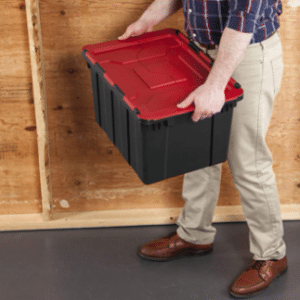
We recommend choosing a tub if you need to carry kits for kids and older people who cannot carry their supplies themselves. It is great that you can put a tub in your garage. However, keep in mind that you will have to find supplies in one big tub that is not organized at all.
Another option is to use a garbage can instead of buying a rolling tub. It might also be a good idea if you really need a lot of space.
3. Rolling suitcase
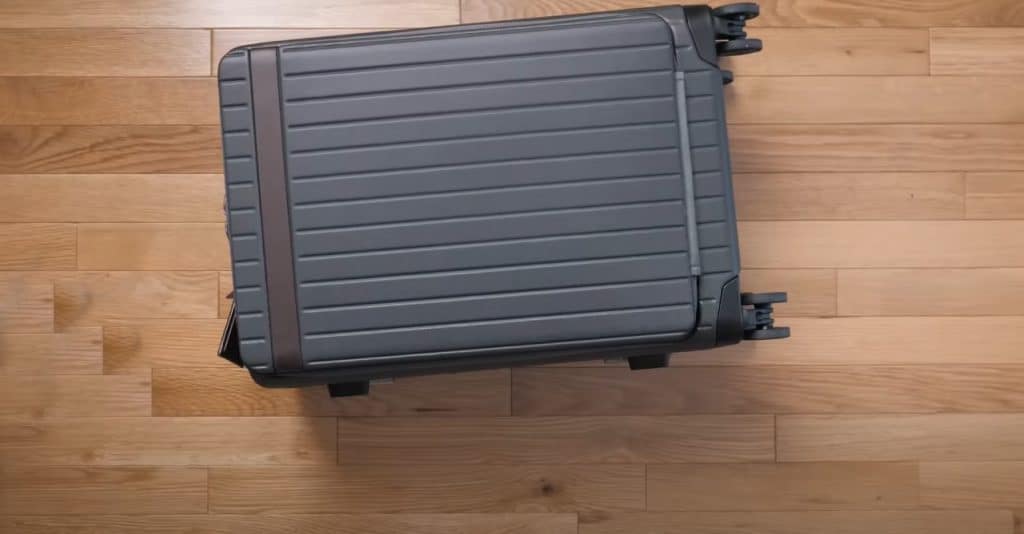
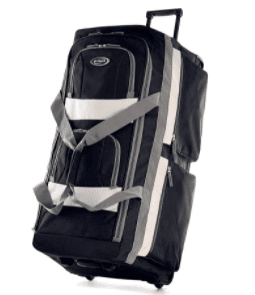
4. Backpack
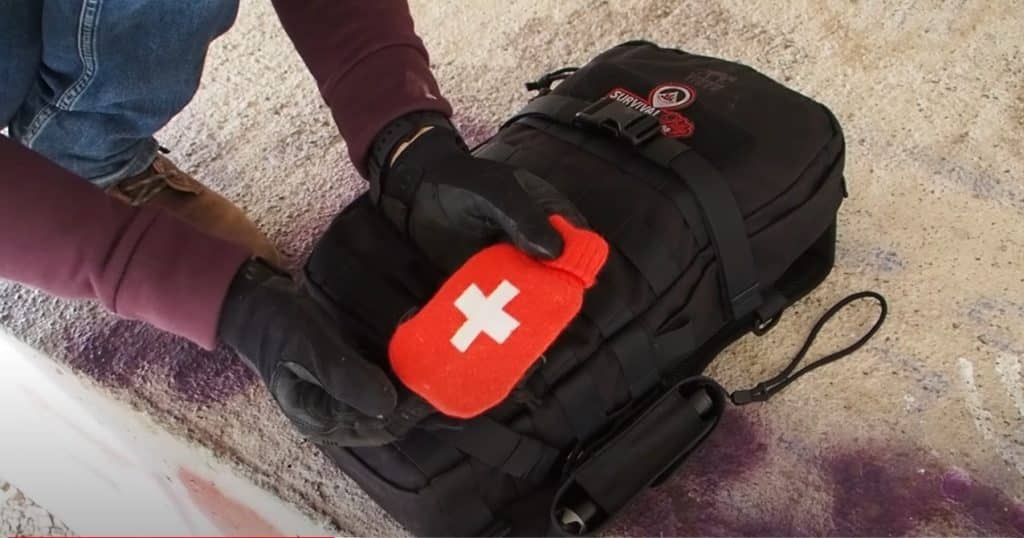
If you are not sure which backpack to choose, visit Amazon and go through their Backpack list. We recommend considering hiking backpacks because they are extremely spacious and comfortable for your back. Moreover, usually, backpacks are not expensive at all. It is easy to find suitable backpacks for kids, too. For example, kids with autism need their own kits and bags to feel comfortable.
Why You Should Start Preparing an Emergency Kit Right Now
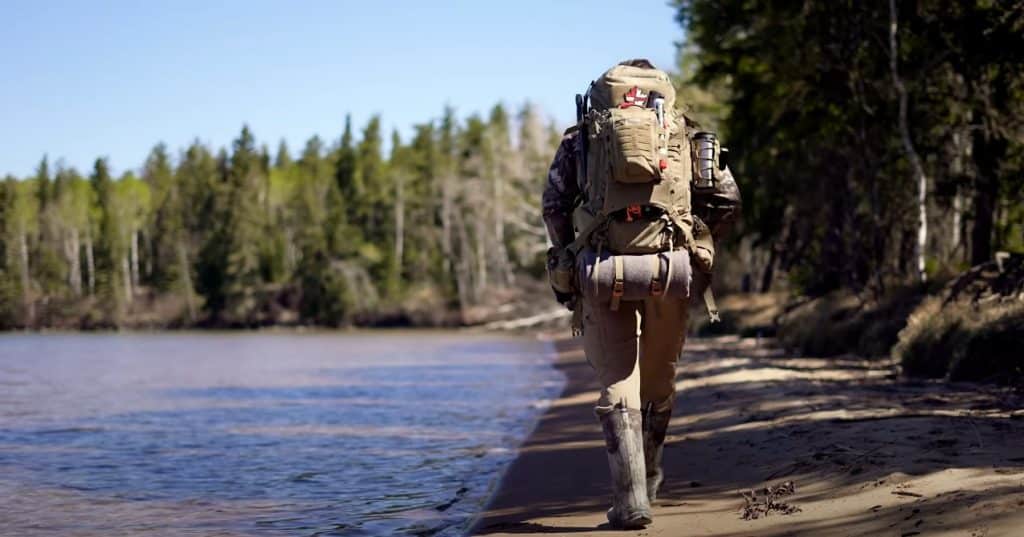
Here is a list of reasons why you should start preparation of your emergency supply kit for at least three days right now:
- Collecting all the supplies in small kits might be time-consuming but also an exciting process. You might start looking for important items that you already have at homes, such as a sleeping bag or moist towelettes, and clean your apartment at the same time. You will collect all the supplies in the same place, so it will bring benefits even if you never need an emergency supply kit to survive disasters;
- If you do not start collecting all the supplies right now, it will be too late. You may postpone your preparation for emergencies until the day you will really need it, so it is better to do it now than to regret it afterward;
- Collecting all the supplies might bring you joy and satisfaction. We promise you will get a feeling of relief when you are done with packing your 72-hour survival kit.
Frequently Asked Questions (FAQ)
What should be included in a 72-hour kit?
Here is a shortlist of recommended items to pack in your 72-hour kit for three days in case of an emergency situation:
- sleeping bags and a warm blanket;
- waterproof container, feminine supplies, diapers, toilet paper, and moist towelettes;
- filter for contaminated air;
- duct tape;
- non-perishable food;
- NOAA Weather Radio, hand-crank radio, and some extra batteries;
- canned food and one gallon of water;
- clothing and underwear;
- first aid kit;
- shelter and plastic sheeting;
- cash, bank account records, and insurance policies.
The most important thing is to pack all supplies a person will need during a disaster or emergency being far away from home because the government might evacuate the whole city. However, do not try to pack too many additional items because your 72-hour kit may be too heavy and big to bring with you.
How do you make a 72 hour kit for emergency preparedness?
Being prepared means packing all the essential supplies in a kit and regularly checking it. For preparation for any kind of disaster, you will need to follow the same steps:
- It is crucial to store canned food in a dry and cool place;
- Buy some plastic containers for boxed non-perishable food and make sure that they have tight lids;
- Do not forget to purchase supplies that you do not usually use in everyday life, such as duct tape, NOAA Weather Radio, extra batteries, and plastic ties;
- When you finish packing emergency supplies it will not mean that you have to forget about a survival kit forever. Regularly check the items that might expire, such as canned food, and replace it;
- Moreover, you might want to buy some additional supplies as the economic, social, or political situation changes every year. For instance, nowadays, printed insurance policies, hand sanitizer, and face masks are more than ever before;
- When preparing 72-hour kits, think about each person in your family and their needs. For instance, do not forget to pack diapers for babies;
- Try to think of all possible scenarios and prepare a few 72-hour kits that you will store in different places. Keep one in your house, another one might be in your car, and you can bring the last one to your working place since nobody knows and which time and in which place you might face a disaster or an emergency.
How much money is in a 72-hour kit?
Prices for an emergency kit start from 36 dollars and can go up to 177 dollars on Amazon, depending on what exactly you want to include in your emergency kit. For instance, you might want to purchase a small kit with basic items only or simply buy a first aid kit and purchase all the other things separately. It is even possible that you will find the majority of things from the emergency supply kit list in your house.
Obviously, there is no need to worry about purchasing special garbage bags. Moreover, you already have all essential personal hygiene items such as a waterproof container, feminine supplies ready. The only thing left is to pack all the supplies for every person in a bag, backpack, or store your kit in a box or your car. However, most likely, you will have to spend some money on NOAA Weather Radio with tone alert or hand-crank radio, non-perishable food, extra batteries, and plastic ties.
Another crucial thing that you should think about when planning your budget is a place or bag where you will store your emergency kit. Even a regular big backpack might be suitable for keeping emergency supplies for all family members. Nevertheless, you might want to ensure that the bag is not too heavy and all basic items from the kit are stored in one place. In this case, you can buy a rolling garbage can, tub, or suitcase. All the options are convenient for storing a 72-hour kit. The price of a suitcase is approximately 50 dollars but it will be higher if you need a larger size. Prices for rolling backpacks and tubs are roughly the same (110 dollars).
Where to store 72-hour kit?
When you are done with checking a survival kit list for each person and purchasing everything for you and other family members it will be time to store all the supplies for emergencies in one place. It is a huge mistake to buy all essential things but have mess kits because it is impossible to find particular supplies in case of emergency. We have collected some ideas on how to organize your three-day supply.
When storing all the supplies from the 72-hour kits together, you can choose from a fishing vest, a rolling tub or a rolling garbage can, a suitcase, or a backpack. The last one is the best option for carrying the kit with you.

